
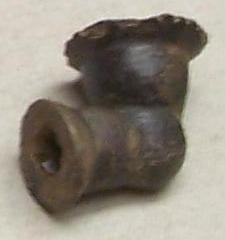
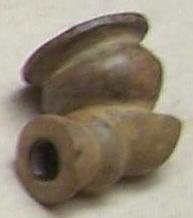
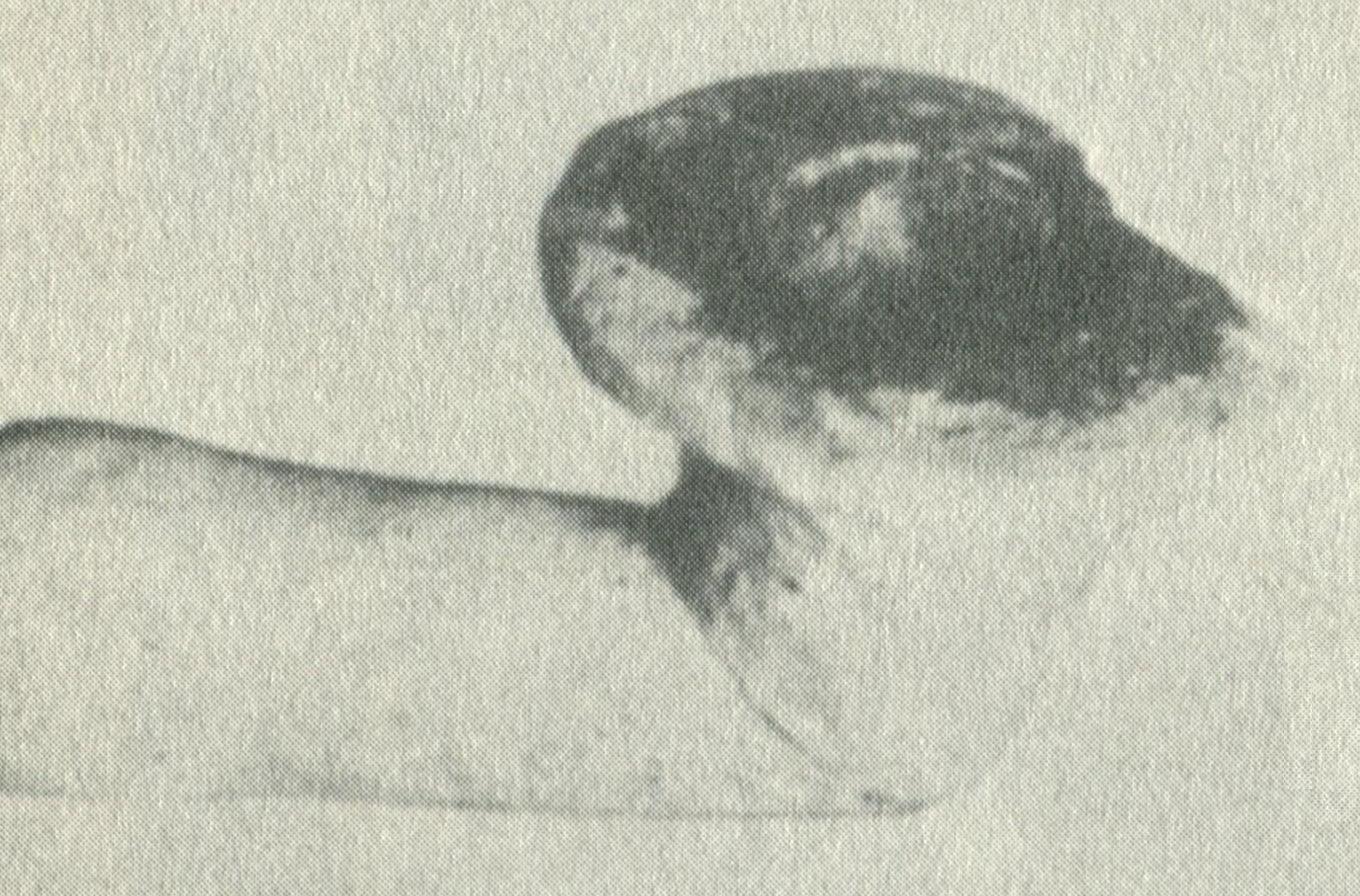
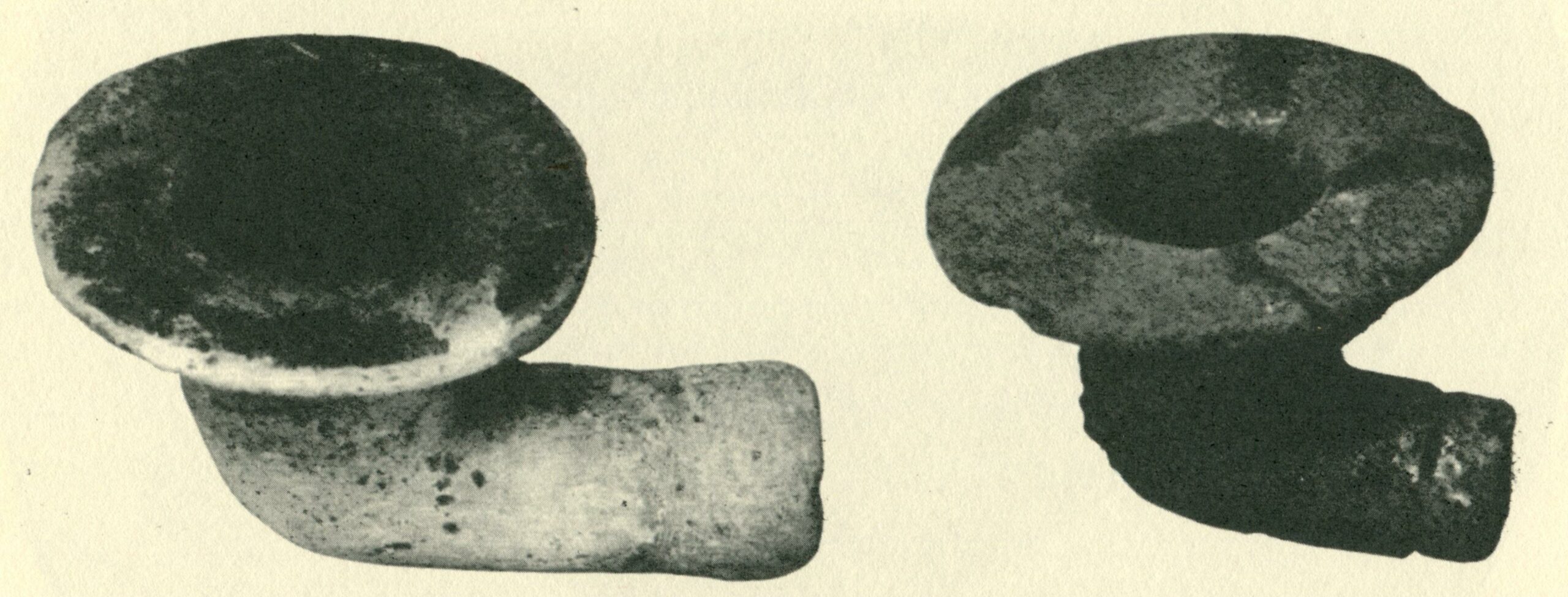
The “flange” along the rim of the bowl of these pipes seems to have grown over time from the Late Woodland Hamilton culture of eastern Tennessee through the Middle Mississippian elbow pipes of Etowah to the occasional example recovered from the Late Mississippian Dallas culture.
First, the fully stemmed pipes shown in figure A were illustrated by T.M.N. Lewis and Madeline Kneberg as belonging to the Late Woodland Hamilton culture.The bottom pipe in this figure appears to be an Alate Stemmed pipe with a widely flanged rim.Lewis and Kneberg did not give the specific provenience for these pipes other than they came from Hamilton sites.Pipes B and C were recovered from the Etowah site in Bartow County, Georgia.Pipe D was recovered by Lewis and Kneberg from the Dallas component of the Hiwassee Island site in eastern Tennessee.Evidence of the popularity of this pipe style among people of the Dallas culture was C.B. Moore’s recovery of two very similar examples from the Citico Mound and village site in Hamilton County, Tennessee. The flange is present in all of these settings, but was only prevalent in major Middle Mississippian sites like Etowah and Moundville.
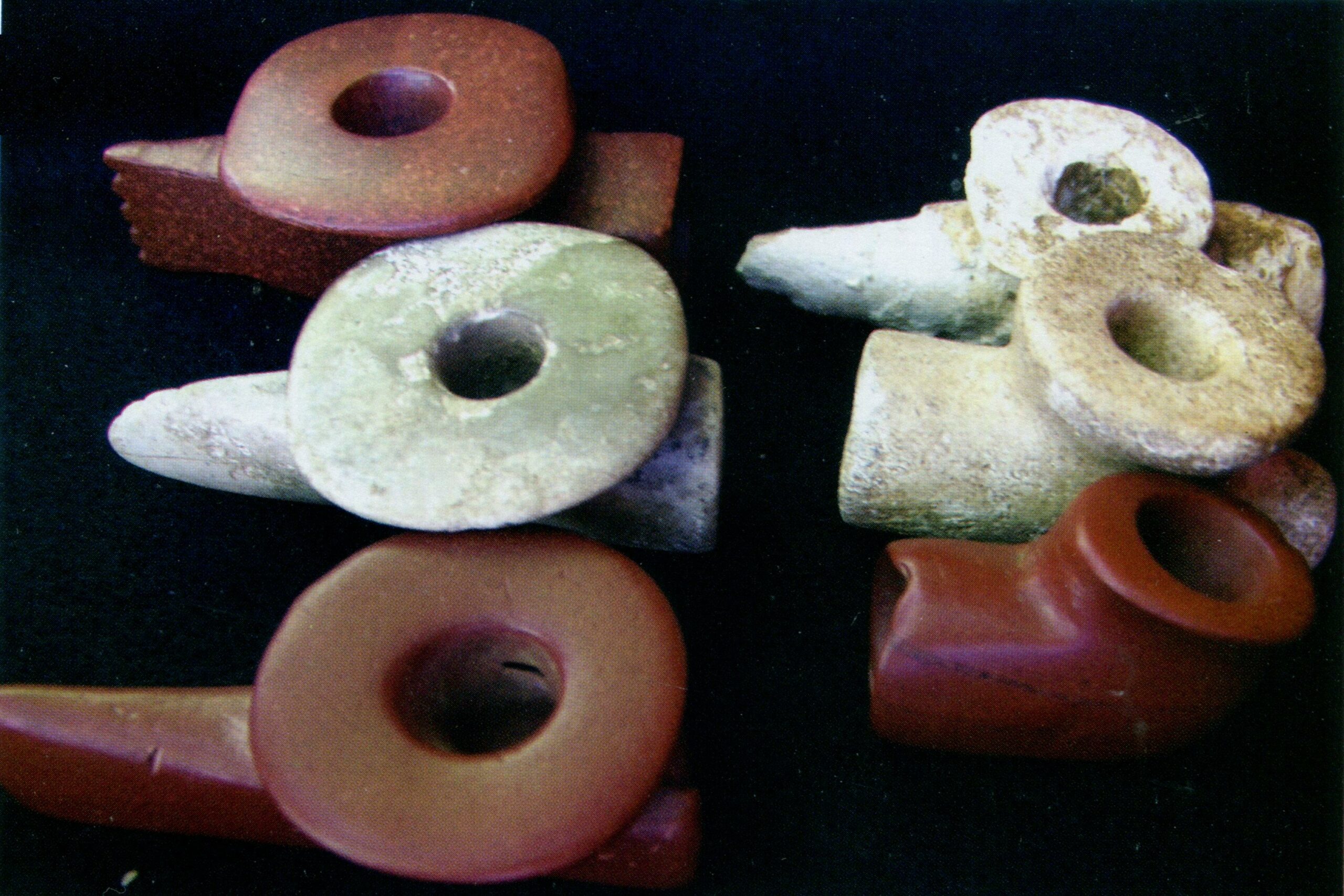
This beautiful collection of Disc red catlinite and white limestone pipes (and one elbow pipe) were recovered by Carlos Travis from sites in Union County, Kentucky.The sites visited by Carlos also contained shell tempered pottery, typical of Late Mississippian sites.The style is uniquely different with its triangular body and widely flanged bowl rim with some rims reaching as much as 8 inches in diameter.
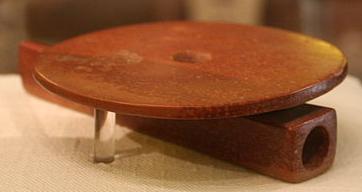
This exceptional example recovered at Moundville Alabama also suggests a Middle Mississippian origin. The sites visited by Carlos Travis also contained some evidence of European (French) trade in the form of tinklers and watermelon glass beads. The fur trade may have been a determining factor for some early migration as these pipes have also been recovered from the Leary site (25-RH-1), located near the city of Rolo in Richardson County, Nebraska.

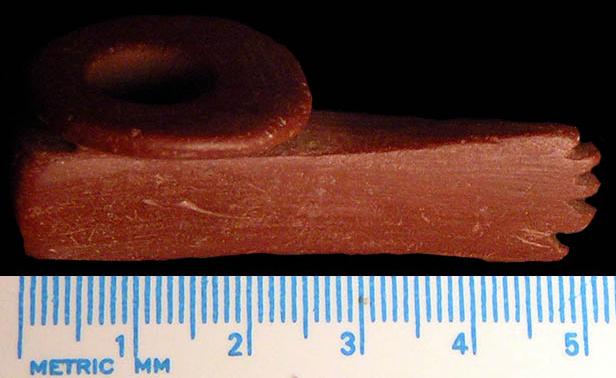
The site was visited by Lewis and Clark on July 12, 1804. The Oneota village and low mounds seen by these early explorers was excavated by A.T. Hill and Waldow R. Wedel in 1939. Pipes A and B are from the site. Example A is part of the collection of David Schock. The site is now part of the registry of National Historic Landmarks.